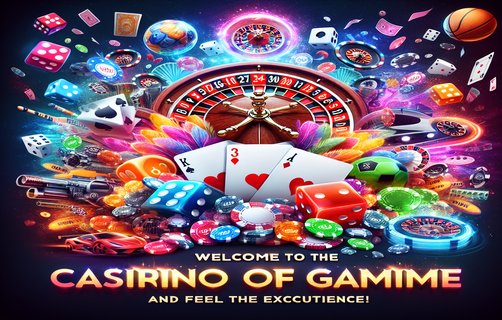The Strategic Depth of Solitaire: Unraveling its Complexity and Win Conditions
सोलिटेयर की रणनीतिक गहराई: इसकी जटिलता और जीत की शर्तों का अनावरण
Solitaire, often perceived merely as a single-player card game, hides a wealth of complexity and strategic nuance beneath its simple exterior. Beyond the enjoyable game mechanics lies a plethora of random win conditions, gameplay regulations, and unique elements like meeples and territory control. As we delve deeper, we uncover how these components contribute to the game's appeal and intricacy.

At first glance, solitaire's random win conditions may seem straightforward; winning typically requires arranging cards in specific sequences and suits. However, the element of chance introduced by shuffling the deck brings forth diverse outcomes and pathways to victory. Each shuffle presents a new series of strategic choices, urging players to adapt their gameplay continually, heightening the overall complexity.

The game's complexity scales remarkably well, particularly when players engage with variations such as Spider Solitaire or FreeCell. Each variant introduces distinct rules and challenges, enabling players to extend their engagement. This scaling adds layers of strategy, as players must navigate various paths to victory. It also appeals to different skill levels, ensuring that beginners and veterans alike can find enjoyment and challenges within the same framework.
Within this realm of solitaire, the incorporation of meeples—from board games—can add an innovative dimension. Consider a solitaire game where players can use colored meeples to represent card moves or significant obstacles. These meeples could ensure players make strategic sacrifices or bold moves, adding yet another layer to typical gameplay.
Gameplay regulations play a pivotal role in defining the strategy of solitaire. The fundamental rule of card stacking determines the order in which players can draw and play cards. Players often find themselves weighing risk against reward, pondering whether to use that critical card or save it for a potentially better play later in the game. What might seem like simple rules can create a web of decision-making, leading to different strategic avenues.
Moreover, the concept of territory board control comes into play in certain solitaire formats that incorporate a scoring system. This adds a fascinating competitive edge; players not only aim to win by arranging cards but also by manipulating scores. Such variations can introduce alliances, guild leaders, and thematic elements that transform solitary play into a vibrant competition.
Joining the array of innovations in solitaire is the rondel, a gaming mechanism often seen in multiplayer strategy games. Imagine a solitaire version where players rotate the next card move in a rondel system. Here, the players can dictate their moves based on the cards’ placement in a circular layout. This technique would add an extraordinary twist, compelling players to strategize dynamically with each rotation.
In conclusion, solitaire may express itself as a simple diversion; however, its intrinsic complexity, layered game regulations, random win conditions, and innovative gameplay possibilities construct a vibrant tapestry of strategic depth. This complexity invites players into a world not merely of chance but of calculated decisions and emergent strategies, showcasing solitaire's lasting appeal across generations.
सोलिटेयर, जिसे अक्सर केवल एक एकल-खिलाड़ी कार्ड खेल के रूप में देखा जाता है, अपनी सरल बाहरी परत के नीचे जटिलता और रणनीतिक बारीकियों की एक समृद्धता छुपाए हुए है। आनंददायक गेम मेकैनिक्स के पीछे एक विस्तृत रैंडम जीत की स्थितियों, गेमप्ले नियमों और विशेष तत्वों जैसे मिपल और क्षेत्र नियंत्रण की अद्वितीयता का खजाना है। जैसे-जैसे हम गहराई में जाते हैं, हम यह उजागर करते हैं कि ये घटक खेल की अपील और पेचिदगी में कैसे योगदान करते हैं।
पहली नज़र में, सोलिटेयर की रैंडम जीत की स्थितियाँ सीधे-सीधे लग सकती हैं; जीत के लिए आमतौर पर कार्डों को विशिष्ट अनुक्रमों और सूट में व्यवस्थित करना आवश्यक होता है। हालांकि, डेक को शफल करने द्वारा पेश की गई मौका का तत्व विभिन्न परिणामों और विजय के मार्गों को सामने लाता है। प्रत्येक शफल एक नए रणनीतिक विकल्पों की श्रृंखला पेश करता है, जो खिलाड़ियों को लगातार अपने गेमप्ले को अनुकूलित करने के लिए उत्कृष्ट करता है, जिससे कुल मिलाकर जटिलता बढ़ जाती है।
खेल की जटिलता वास्तव मेंRemarkably अच्छी तरह से स्केल होती है, विशेष रूप से जब खिलाड़ी स्पाइडर सोलिटेयर या फ्रीसेल जैसे विकल्पों के साथ संवाद करते हैं। प्रत्येक विकल्प विशिष्ट नियमों और चुनौतियों को प्रस्तुत करता है, जिससे खिलाड़ियों को अपनी संलग्नता का विस्तार करने की अनुमति मिलती है। यह स्केलिंग रणनीति की परतें जोड़ देती है, क्योंकि खिलाड़ियों को विजय के विभिन्न मार्गों के साथ नेविगेट करना होता है। यह विभिन्न कौशल स्तरों को भी आकर्षित करता है, यह सुनिश्चित करता है कि शुरुआती और अनुभवी दोनों एक ही ढांचे के भीतर आनंद और चुनौतियों को पा सकें।
इस सोलिटेयर के क्षेत्र में, मिपल का समावेश—बोर्ड खेलों से—एक नवीन आयाम जोड़ सकता है। कल्पना कीजिए एक सोलिटेयर खेल जहां खिलाड़ी रंगीन मिपल का उपयोग करके कार्ड के चाल या महत्वपूर्ण बाधाओं का प्रतिनिधित्व करते हैं। ये मिपल सुनिश्चित कर सकते हैं कि खिलाड़ी रणनीतिक बलिदान या साहसी कदम उठाएं, जो सामान्य गेमप्ले में एक और परत जोड़ता है।
गेमप्लेय नियमों का खेल में एक महत्वपूर्ण भूमिका होती है, जो सोलिटेयर की रणनीति को परिभाषित करती है। कार्ड के स्टैकिंग का मौलिक नियम बताता है कि खिलाड़ी कार्डों को किस क्रम में खींच और खेल सकते हैं। खिलाड़ी अक्सर जोखिम और पुरस्कार को तौलते हैं, यह सोचते हुए कि उस महत्वपूर्ण कार्ड का उपयोग करना है या इसे बाद में बेहतर खेल के लिए बचाना है। जो साधारण नियम प्रतीत हो सकते हैं, वे निर्णय लेने के एक जाल का निर्माण कर सकते हैं, जिससे विभिन्न रणनीतिक मार्ग खुलते हैं।
इसके अलावा, क्षेत्रीय बोर्ड नियंत्रण का सिद्धांत कुछ सोलिटेयर प्रारूपों में खेल में आता है जो अंकन प्रणाली को शामिल करते हैं। यह एक आकर्षक प्रतिस्पर्धात्मक बढ़त जोड़ता है; खिलाड़ी न केवल कार्डों को व्यवस्थित करके जीत के लिए प्रयास करते हैं बल्कि स्कोर को भी नियंत्रित करते हैं। ऐसे विकल्प सहयोग, गिल्ड लीडर, और यहां तक कि थीमाटिक तत्वों को पेश कर सकते हैं, जो एकान्त खेल को एक जीवंत प्रतियोगिता में बदल देते हैं।
सोलिटेयर में नवाचारों की इस श्रृंखला में एक रोंडेल भी शामिल है, जो अक्सर बहु-खिलाड़ी रणनीति खेलों में देखा जाता है। सोचिए एक सोलिटेयर संस्करण जिसमें खिलाड़ियों को रोंडेल प्रणाली में अगली कार्ड चाल घुमानी होती है। यहाँ, खिलाड़ी एक गोलाकार लेआउट में कार्ड की स्थिति के आधार पर अपने चालों को निर्धारित कर सकते हैं। यह तकनीक एक असाधारण मोड़ जोड़ देती है, खिलाड़ी को प्रत्येक घुमाव के साथ गतिशील रूप से रणनीतिक रूप से सोचने को मजबूर करती है।
अंत में, सोलिटेयर एक सरल मुक्ति के रूप में व्यक्त हो सकता है; हालांकि, इसकी अंतर्निहित जटिलता, परतदार गेम नियम, रैंडम जीत की स्थितियाँ, और अभिनव गेमप्ले संभावनाओं ने रणनीतिक गहराई का एक जीवंत कपड़ा तैयार किया है। यह जटिलता खिलाड़ियों को एक ऐसी दुनिया में आमंत्रित करती है जो केवल मौके नहीं, बल्कि गणना किए गए निर्णयों और उभरती रणनीतियों का निर्माण करती है, सोलिटेयर की पीढ़ियों के बीच दीर्घकालिक अपील को प्रदर्शित करती है।

comments
GameMaster05
This article really expands on the strategies involved in Solitaire—who knew it was so complex!
CardShark47
I love the idea of incorporating meeples! It would add a new layer to my gameplay.
Strategist88
The notion of a rondel in Solitaire is fascinating. Can't wait to try out new variations.
SolitaireQueen
I never thought about the random win conditions like this. It makes every game feel fresh.
PuzzleLover92
This really highlights why Solitaire is such a timeless game. It's more than just luck!